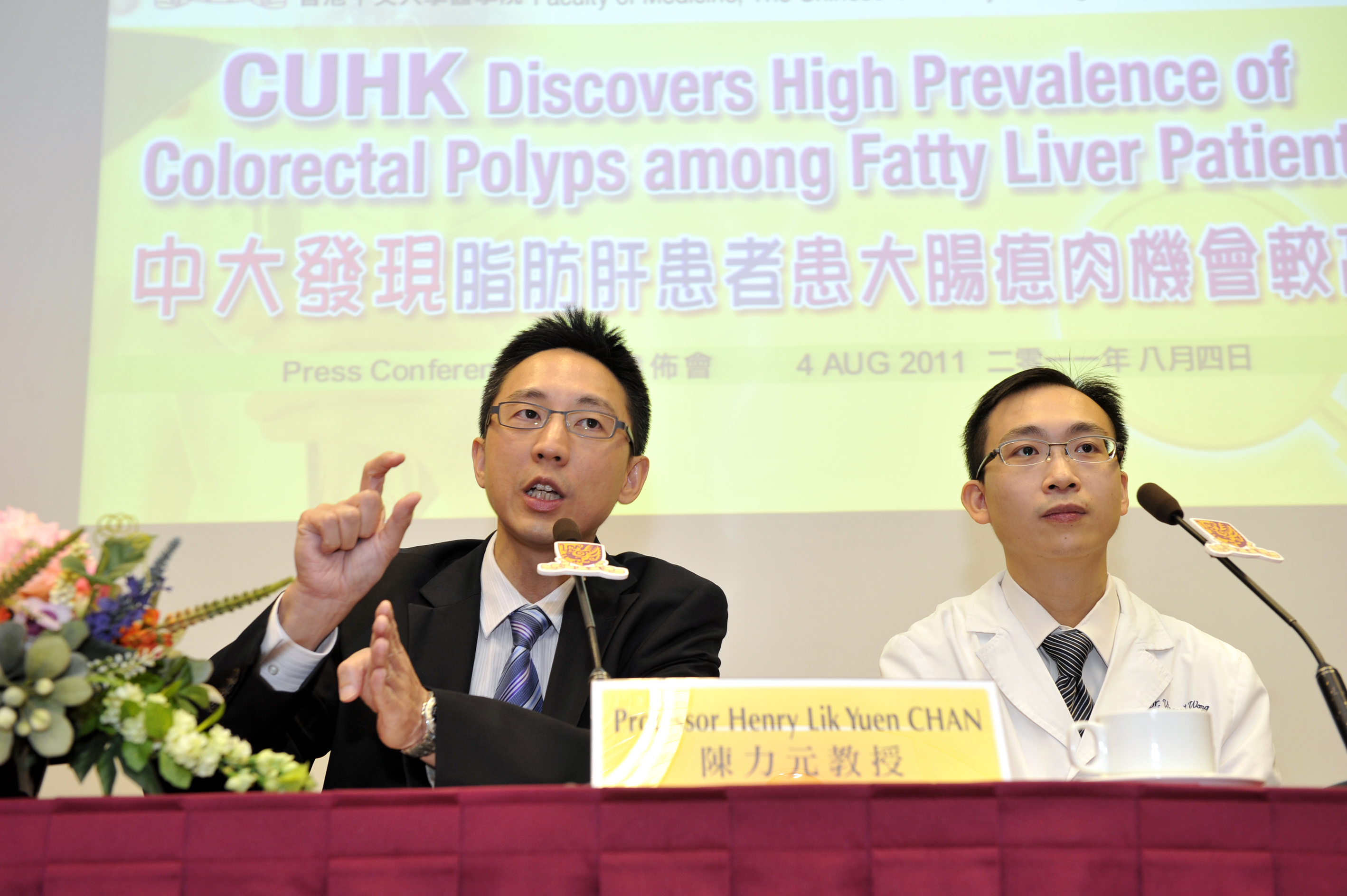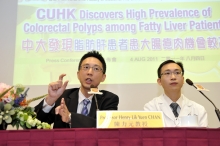CUHK
News Centre
CUHK Discovers High Prevalence of Colorectal Polyps among Fatty Liver Patients
Nonalcoholic fatty liver disease (NAFLD) is one of the most common chronic liver diseases worldwide. In Hong Kong, 1 in 4 adults have fatty liver. Simple steatosis is the benign and inactive form of NAFLD. The active form of fatty liver, nonalcoholic steatohepatitis (NASH), is associated with disease progression, and may result in cirrhosis and liver cancer. Fatty liver is strongly associated with obesity, diabetes and systemic inflammation, which are all related to the development of cancer. According to epidemiological studies, the mortality from cancer among patients with fatty liver has been increasing.
According to data from the Centre for Health Protection, colorectal cancer is the second most common cancer in Hong Kong, accounting for 16% of all new cancer cases in 2008. It is also one of the most preventable cancers. Colorectal polyps are benign before they transform into cancer. In other words, if colorectal polyps are detected and removed before transformation, cancer and deaths can be prevented. For average risk individuals, screening for colonic polyps is recommended by most international guidelines starting at the age of 50.
From 2008 to 2010, investigators from the Center for Liver Health at The Chinese University of Hong Kong (CUHK) performed screening using colonoscopy in 380 local citizens aged 40-70 years. The study subjects were healthy volunteers from the general community and hospital patients. Overall, NAFLD patients were more likely to have colorectal polyps and advanced polyps. Besides, NAFLD patients were more likely to have polyps in right-sided colon. The right-sided colon can only be examined by colonoscopy but not sigmoidoscopy. (Table 1)
Table 1.
|
Patients |
Colorectal polyps |
Advanced polyps |
Polyps in right-sided colon |
|
NAFLD (N=199) |
69 (35%) |
37 (19%) |
47 (68%) |
|
Controls (N=181) |
39 (22%) |
10 (6%) |
16 (41%) |
Furthermore, among 135 NAFLD patients whose disease severity was assessed by liver biopsy, those with NASH were more likely to have colorectal polyps and advanced polyps. This indicates that the severity of NAFLD is associated with the risk of colorectal polyps. (Table 2)
Table 2.
|
NAFLD patients receiving liver biopsy (N=135) |
Colorectal polyps |
Advanced polyps |
|
NASH (N=49) |
25 (51%) |
17 (35%) |
|
Simple steatosis (N=86) |
22 (26%) |
12 (14%) |
In conclusion, NAFLD is closely associated with colorectal polyps. NAFLD patients aged 40-70 years have increased risk of colorectal polyps. The polyps tend to be advanced and located in right-sided colon. In addition, more colorectal polyps and advanced polyps are found in patients with more active NAFLD. Therefore, CUHK recommends NAFLD patients to receive colonoscopic screening starting from the age of 40.



